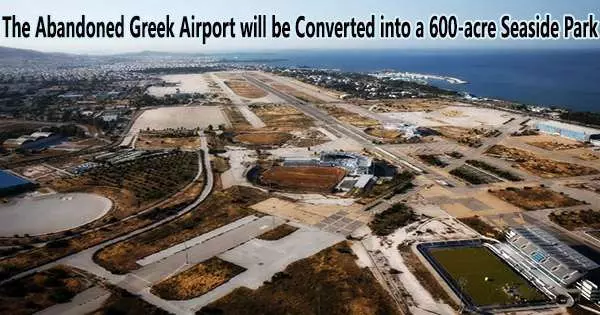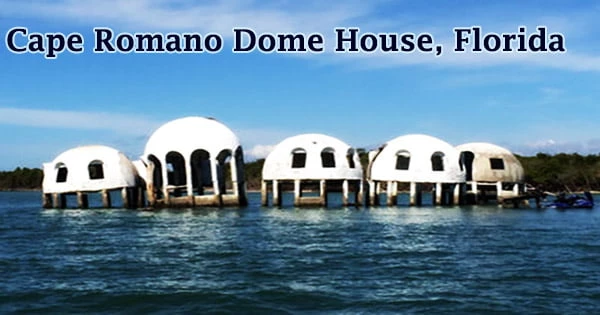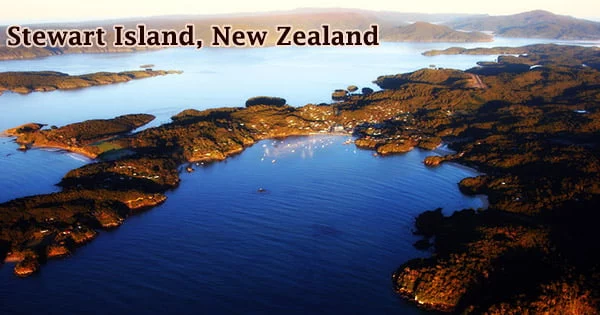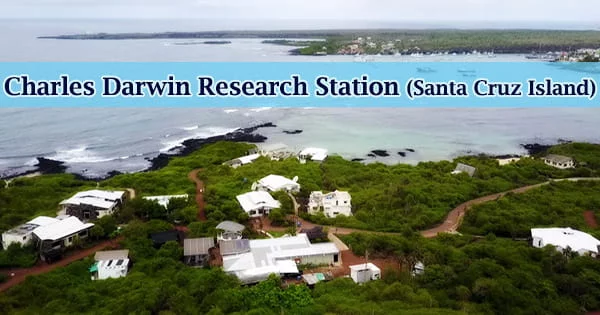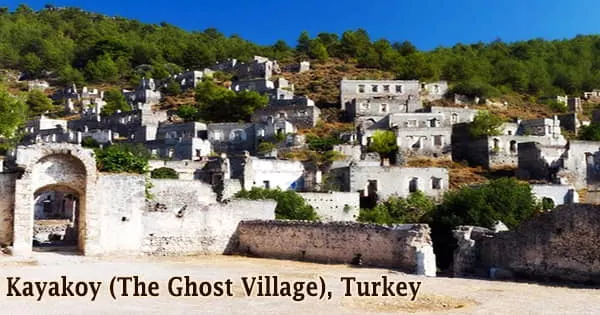Athens, the capital of Greece, is more frequently identified with its renowned ancient architecture standing on barren hilltops than with lush, open spaces. However, this may soon change as a massive coastal park larger than London’s Hyde Park is planned to be built on the site of the city’s former international airport and the shoreline that surrounds it.
The site of Ellinikon International Airport, once a bustling gateway to Greece, has lain empty for almost two decades. With the exception of a brief period during the 2004 Summer Olympic Games, when it served as a softball field, a hockey rink, and a site for fencing, the building was abandoned when it was deactivated in 2001. In a dismal contrast to its heyday, rust-colored weeds that have been dried out by the sun now shoot out from old stands.
Construction of the 600-acre Ellinikon Metropolitan Park, which will revitalize the neighborhood and serve as a park, playground, and cultural hub for Athenians while enhancing the city’s resilience to climate change, will begin early in 2019.
“This is a generational and transformational project for Greece,” said Michael Grove, landscape architect for Sasaki, the Boston-based firm responsible for the project’s design. Athenians were “frustrated that this was an empty piece of important public land for 20 years,” he added. Sasaki is famous for its landscape architecture and urban design, responsible for New York’s Greenacre Park, Charleston Waterfront Park, and the 2008 Beijing Olympic Green.

An eye to the past
Some of the site’s history will be preserved in its new form. The 1960s terminal hall designed by renowned Finnish-American architect Eero Saarinen, will stay standing, as will the massive runway light poles. Former runway concrete and tarmac measuring more than 300,000 square feet will be used for pavement, benches, and other purposes.
This “upcycling” approach helps to bolster the park’s environmental credentials, said Grove: “We’re using what we have on site through all this beautiful concrete these 30-centimeter-thick, concrete slabs with marble aggregate the size of golf balls.” He added that they will also try to minimize carbon emissions once the park opens, by using an all-electric maintenance fleet and organic fertilizers and pesticides.
Only Greek native species will be planted on the park’s grounds, including more than 3 million plants and 31,000 trees from 86 different kinds. To find native seed mixtures that will help the environment and flourish in the region’s increasingly arid climate, designers worked with Greek nurseries.
The repercussions of climate change are already being felt in Athens, where temperatures are rising and extreme weather events are happening more frequently. One 2018 study from Newcastle University, which analyzed the risks of climate change on 571 European cities, predicted Athens would experience some of the worst increases in severe drought and heatwaves by 2050.
Temperatures are exacerbated by the urban heat island effect, as the city’s concrete, stone and asphalt absorb and retain heat, explained Eleni Myrivilli, chief heat officer for the City of Athens and senior advisor on climate resilience at Atlantic Council’s Arsht-Rock Resilience Center. “Athens is very densely built, and all of the different surfaces are totally inappropriate for rising heat,” she said, adding that they don’t absorb water so can lead to flooding during increasingly common cloudbursts.
Green space can help to counter these effects. “We’re essentially inverting a site that was 80% hardscape … to 80% softscape,” said Grove, and replacing concrete or stone with trees and shrubs helps to absorb rainfall and create shade, which has a cooling effect.
To combat water scarcity, the park will be irrigated with treated wastewater supplied by a plant nearby, and a 3.7-acre lake repurposed from the former Olympic canoe and kayak area will collect and store stormwater.
Such design features are crucial for a climate-resilient future, said Aleksandra Kazmierczak, climate change and health expert for the European Environment Agency (EEA). “Green spaces are one of the really effective modes of lowering temperatures in cities,” she said. “If cities are designed more like sponges that can take in excess water that can translate into economic benefits of not being flooded and not losing millions and billions of Euros in damage.”
Healthier cities
Another major benefit of green spaces is the effect they can have on “physical health, mental health and social cohesion,” said Kazmierczak. People who live in greener environments tend to be less stressed and less obese, and green space can bring down levels of noise and air pollution which can have long-term health benefits, she added.
For Athens, a city where green space is sparse one study from the EEA ranks it in the bottom five EU capitals for urban tree cover a big green development is an exciting prospect, according to Myrivilli. While there have been other recent efforts to create green space and “pocket parks” within the city, none compare to the Ellinikon in terms of scale or attention to detail around nature-based solutions, she said.
“For the mental health and physical health of Athenians, it’s going to be a place for respite … and rebalancing from living in a very densely populated city,” she said, adding that it will be especially important for those who are less affluent and can’t afford to leave the city during the hot summers.
The Ellinikon will have something for everyone, said Grove. There will be public beaches, sports facilities, outdoor theaters, dining establishments, and sculpture parks. He wants residents of Athens to actively explore the area and interact with nature by providing 30 kilometers of bike lanes and 50 kilometers of pedestrian routes.
The project has been a long time coming. Before the airport was even shut down, the plan to turn the area into a park was conceived, but due to funding issues, the 2008 financial crisis, and disputes over who would develop it, the project was repeatedly postponed.
In 2021, Greek real estate firm Lamda Development was formally awarded the contract, bringing in Sasaki and other architects for the design. Lamda estimates the project will cost around $8 billion, including the residential and commercial developments fringing the park.
Now momentum is finally here, the architects are determined to work quickly. The first phase of the park approximately 250 acres including the central Olympic Square, on the city’s tram line, and the entire coastal front is set to be completed by the end of 2025 or early 2026, said Grove.
He envisages Ellinikon becoming Athens’ equivalent to Central Park in New York a place that could change how Athenians use public space, will contribute to the public and ecological health of the city, and will stand the test of time. “Looking at the history of Athens, we’re expecting this park, in some form or another, to be around for 1,000 years,” he said.
